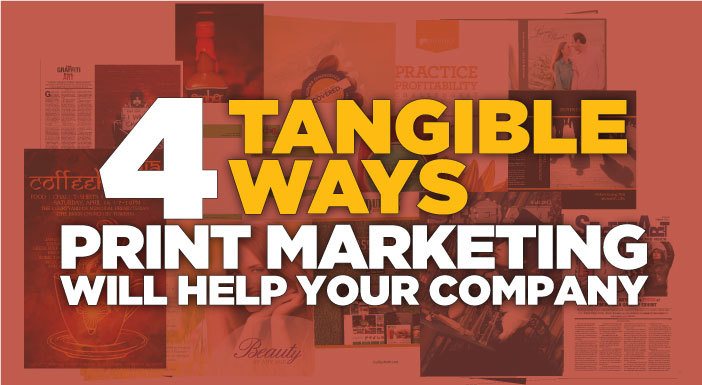“Touch is the fine line between read and remember” says Sappi, one of North America’s leading paper making companies. Though Sappi has a vested interest in the success of print, they have also done significant research in the area of haptics – the science of how things we touch shape the way we feel. In The Communicators Guide to the Neuroscience of Touch, they show how savvy brands use haptics and tangibility to their advantage. They use these to create deeper connections with their customers.
More...
This is one reason why tangibility is important, and this is one of print’s chief advantages over digital marketing. But what makes it such a touchstone? May people wonder "is print is still relevant?" We know it is for many reasons. Below are just a few pros of using print media.

Reading on Paper is Slower and More Intentional
We all do it (and are perhaps doing it now).
We skim.
We read online content very quickly, and we skim it for the big idea. In contrast, information consumed on paper is digested slower and more intentionally. This allows readers to absorb and comprehend more information at a deeper level.
Along with that, in the twenty-first century, the ability to multitask is a virtue and necessary skill. Whether we eat or work, talk, or watch TV, our phones are always at our fingertips. In the midst of any and all of these activities, we check email, read articles, and skim the latest news. In other words, digital content seldom receives our undivided attention.
On the other hand, printed material allows us to concentrate and connect. I hope the point here is obvious. When businesses pitch an idea, they want full attention from potential buyers. Because articulating ideas requires full engagement from buyers, print is often the better choice.
Printed material allows us to concentrate and connect.
While it definitely takes work to get your material into the hands of potential clients (making good design essential), print is definitely the better route for certain businesses.
Print Readers Comprehend and Remember More
When a reader is more focused and concentrated on content, it means more comprehension and recollection.
This is especially true when processing information in print is compared to the same information scanned online. The multi-sensory experience of touching and holding paper helps readers form connections between concepts and content.
The multi-sensory experience of touching and holding paper helps readers form connections between concepts and content.
Print Marketing Raises Buyer Awareness
When the concepts and content are remembered, a buyer’s awareness rises.
Online and television ad campaigns decrease in effectiveness after four exposures. But even after five, print continues to improve awareness (and subsequent persuasion), at five or more points of contact. This makes print ideal for lasting campaigns.
The need to use print is not the same for everyone, but read three signs your company should definitely use print.
As Mark Andreson put it, “print products we can hold in our hands and enjoy more than once. Digital is Ephemeral, gone, and replaced.”
Print products we can hold in our hands and enjoy more than once. Digital is Ephemeral, gone, and replaced
Print Marketing Leads to Purchases
All of the above reasons ultimately lead to an increased return on investment (adding special effects even moreso!). Print’s tangible and multi-sensorial nature makes it easier for buyers to make connections. Because of this, print marketing leads to purchases. Promotions and campaigns issued only digitally do not produce the same response.
The above listed effects of print are just four reasons why your company should consider marketing through print. Every company wants to be correctly understood. Every company wants to be remembered. The success of every company depends on purchases being made. Consequently, why shouldn't you try print marketing?
Please let me know your thoughts; we want to know your opinion.
If you are convinced you need to try print marketing, contact Inkling Creative today!

